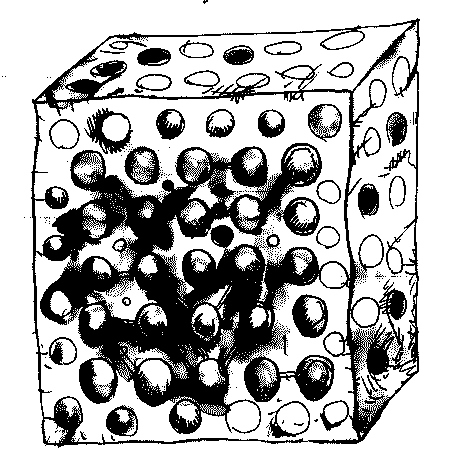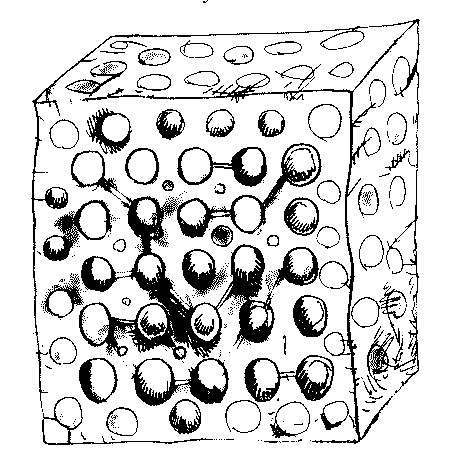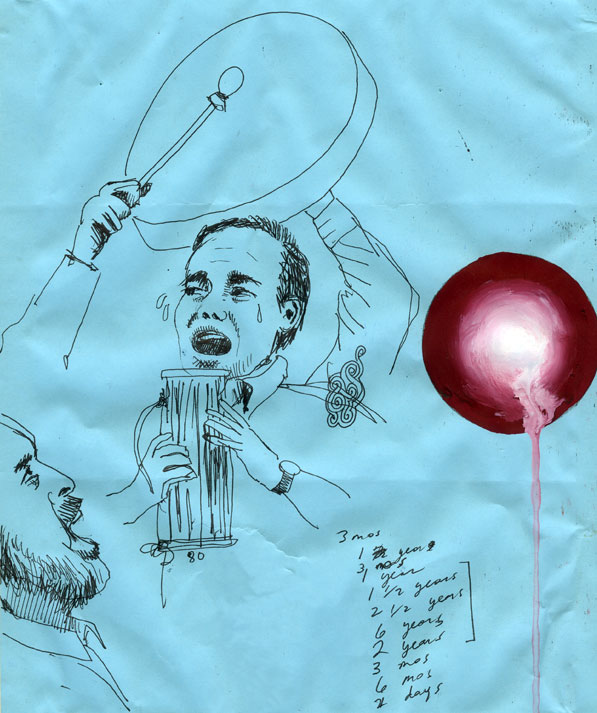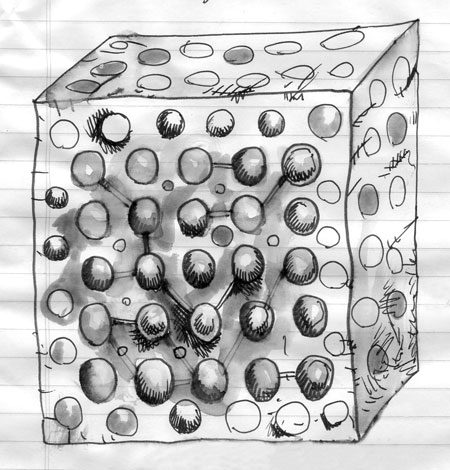


adventures in vinyl (listening to old records)
1. John Cale, "Gideon's Bible," from the Vintage Violence LP. Not long after leaving the Velvet Underground Cale essentially invented '70s pop with this album of short country-inflected songs. (Anything with prominent pedal steel guitar is country-inflected.) "Gideon" begins with a slightly jazzy intro reminiscent of pre-Joker Steve Miller, and builds to a chorus that is unadulterated Brian Wilson, with strange lyrics: "Gideon lied/and Gideon died/the force of China fell."
2. Tod Dockstader, "Traveling Music" from Organized Sound by Tod Dockstader (Owl Records). Early '60s electronic music that doffs the serialist hair shirt and has some serious fun, or fun seriousness. Exploiting stereo, tape effects and reverb, Dockstader's abstract blips and pulses move with a rhythm of expansion and contraction over a 9 minute run time. Surprise, humor and seductive aural textures keep the listener's attention completely in the moment. While it is not as unforgiving as, say, Milton Babbitt from the same time period, "Traveling Music" never detours into Enoch Light stereo hi-fi kitsch. It hasn't dated in the slightest.
3. Ornette Coleman, "Free Jazz," a 37 minute continuous improvisation with one drum-bass-sax-trumpet quartet parked in the left channel and another in the right. Each group was listening to its own members as well as the playing of the other quartet and one hears quite a bit of antiphonal dialogue. The piece is not as "free" as it probably sounded in 1961, and maintains a steady hard bop rhythm for most of its length. The overall feel is as "all-over" as the Pollock painting gracing its gatefold cover but one's ear has a tendency to linger on the lapidary skronks of Eric Dolphy's bass clarinet. (About that Pollock painting: the cover tells us that White Light appeared with the permission of art dealer Sidney Janis, meaning it was still a few years away from MOMA, where it now resides. Per Naifeh & Smith's Pollock bio it was a late embarrassment for Pollock, a messy so-called return to his drip style after some figurative experiments, which was in fact "painted long before" the other works in his final one-person show in '54. While overworked, it's not a bad painting, and reproduces boldly on the Coleman LP jacket.)
Slow Bob and Monkeybone
In 1991, stop-motion animation whiz Henry Selick (Coraline, Nightmare Before Christmas) made a pilot TV short called "Slow Bob in the Lower Dimensions," combining animation and live action. It has now turned up on YouTube (for the moment).
Conjoined twin sisters wake up in the dead of night and tiptoe upstairs to observe a man who lives in their attic in a strange state of time suspension named Bob. He clings to the upper corner of a wall like a spider, sleeping, and then a lizard feeds him wake-up juice from a soft drink can. He jumps down from the wall and sees an actual spider webspinning the word "EMERGENCY!" He coils into the fetal position and lizards surround him in a magic circle and begin spraying him with electricity. He teleports to the lower (2D?) dimensions where people who live in hovering black and white photographs are being chased and sliced apart by flying pairs of scissors. Bob, who is now a flat, Terry Gilliam-like puppet, hatches a scheme to destroy the scissors. A regal photo-woman gives him the gift of a watch, in gratitude, and Bob returns to his attic in a cloud of electricity. Just then, the conjoined twin girls burst into the attic and begin painting Bob with yellow paint and laughing demonically. In his slowed-down state he suffers their humiliation; we don't know why they are hostile to him. In the final shot, he wipes yellow paint off his watch face and and sees the photo-queen giving him words of advice and counsel. End. Music by The Residents.
Selick's 2001 film Monkeybone, with a script by Sam Hamm, is similarly bizarre--and I would say brilliant--but widely considered a flop (20% on the tomato-meter and all that). It was based on a graphic novel Dark Town, which sounds intriguing from the Wikipedia description:
A man, Jacques De Bergerac, is in a coma after being in a car accident. He finds himself in Dark Town, where the land is dominated by strange living, breathing puppets and marionettes with button eyes.
The Lords of Dark Town are trying to kill Jacques, and use his body in the real world as a vessel for an agent of Dark Town. There's only one problem, Jacques' imagination. He carries it with him always, in a red suitcase. It protects him from the horrors of Dark Town.
Meanwhile, In the real world, Jacques' wife decides to take him off life support. Jacques now only has 12 hours to live. Back in dark town, Jacques encounters Death, Who informs him of his time limit, and tells him how to escape Dark Town. The book ends on a cliff-hanger, as Jacques is captured by a knight after wandering onto a chessboard.
...
Dark Town was originally intended to be a miniseries. However, only the first part of the story was ever published.
In the film version the suitcase is replaced by an oversexed cartoon monkey, who conspires against the comatose cartoonist for a shot at inhabiting the mortal body of Brendan Fraser. The role was originally intended for Jim Carrey and Fraser wasn't up to antics at that level; nevertheless he is a more sympathetic actor and his romance with the sublime Bridget Fonda, playing his sleep therapist, makes you really care about whether he escapes Dark Town.


